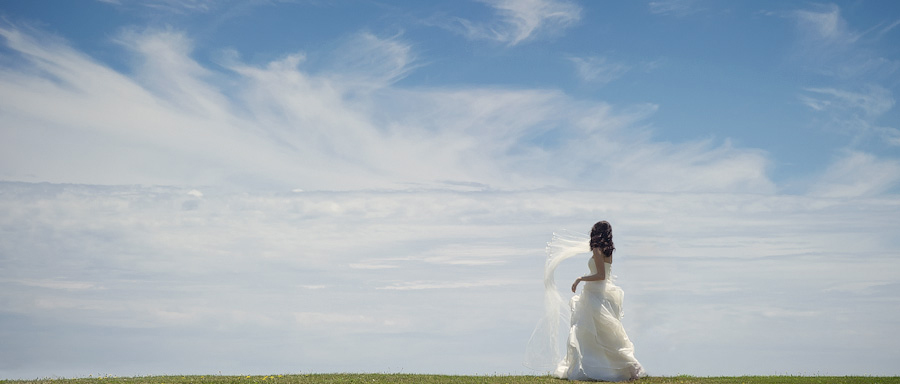When Is The Right Time To Go Full Time?
When is the right time to go full time? It's a question I'm sure many aspiring photographers have contemplated. Let's be honest: photography can be an intimating career path with A LOT of different variables to consider. Our friends, Kate McElwee and Leah Haydock from Tips for Wedding Photographers, recently posted about how to know when to go full time with photography (specifically in this case with wedding photography). For anyone planning to go into the photography business, check out the article below which offers a lot of great tips and information to consider. We are lucky to feature Kate's work through out the post. Thanks, Kate!

______
The Right Time To Go Full Time
I recently presented about my photography business at a local photographers get together and one of the questions was “How do you know when to go full time with photography?”
This is a tough one as everyone has different commitments and responsibilities from a financial and family perspective. Here are some of the steps you can take to help you make this important decision:
1. Make sure that being a wedding photographer is really the right career path for you. As a full time photographer, the amount of actual photographing you do is probably 10-20% of your time. You’ll need to understand and enjoy everything involved in running a small business (or outsource or delegate to the right people) – financial planning, sales, marketing, social media, taxes, client communication, editing and processing, album design and much more
2. Put together a business plan with clear objectives. It’s really helpful to set financial and creative objectives along with defining your target market and business policies

3. Spend some time really understanding your financial situation
a) Work out your essential annual living costs – mortgage/rent, utilities, groceries, health insurance, car
b) List out your fixed and variable annual business costs
c) Estimate your annual revenue for your photography business
Knowing these three things should give you a clearer picture of whether you can afford to give up any non-photography jobs.
For example:
Essential living costs $30,000 annually or $2500 per month
Fixed business costs (e.g insurance, website, phone, internet, advertising, studio rent, employees) $25,000
Variable business costs (e.g transport, second photographer, outsourced editing, albums) $1500 per wedding
Estimated revenue 30 weddings @ $4000 = $120,000

Once you know these costs you can do some simple math:
$120,000 revenue – $25,000 fixed costs – $45,000 variable costs = $50,000 gross profit
$50,000 gross profit – taxes (assume 33%) = $33,000 net profit i.e. the money you take home each month is $2750
In this situation the photographer would be covering their basic living expenses – just!!! – and there would be $250/month left over for going out to dinner, vacation, unexpected bills, coffee! etc etc
Also note that in this situation there is no money allocated to a savings fund, pension, college funds for kids etc. What if you need to upgrade your camera model – it’ll be tough to find $5000….

It’s really easy to think “Wow! 30 weddings a year at $4000 – perfect!” but when you do the math you realize that you’ll be just about living. Of course you can live more frugally, cut business costs, expand into other photography markets….
It’s also worth thinking about the actual hours you’ll be working. The majority of photographers I know work 6-7 days a week (1 wedding and then in front of the computer editing, responding to clients, designing albums, blogging etc) from early in the morning until late at night) especially when you’re new and you’re building your business.

Let’s say you do the math and the numbers work for you. You could try putting all of the money from your non-photography job into a savings account and try to live only on your photography income. Not only does this help you see if you want to do this full time but it also provides you with a safety net of savings. It’s prudent to have 6-12 months of income saved in case business is slow or your have unexpected expenses.

For me personally, I kept up my non-photography day job (Marketing Director at a Medical Device company – kind of different to weddings!) until I literally reached my breaking point. It got so hard to juggle both jobs and I was physically exhausted, I even ended up in the ER thinking I was having a heart attack only to be told that this was what stress felt like! Working the day job enabled me to build my equipment, invest in numerous educational events and build a safety net of savings.

It’s fairly common for photographers to get advice like “Follow your dream!” and “You’ll make it happen if you work hard enough” but I can’t imagine many other small business owners just crossing their fingers and diving in!
______
Check out more of Kate's work on her website here and see Leah's work here.
Posted by Rachel Gianatasio, PNB Intern

Post your comment
Comments
No one has commented on this page yet.
RSS feed for comments on this page | RSS feed for all comments
Topics
artist spotlight artweek camera eye workshops coldest boston moments dana mueller digital photography doug levy education events exhibition friends of photo nights boston friends of pnb glenn ruga on social documentary griffin museum griffin museum of photography instagram interview kickstart your wedding lensprotogo michael seamans new england portfolio reviews panopticon gallery photo contest photographic resource center photography photography atelier 17 photorama pnb events tips wedding photography



